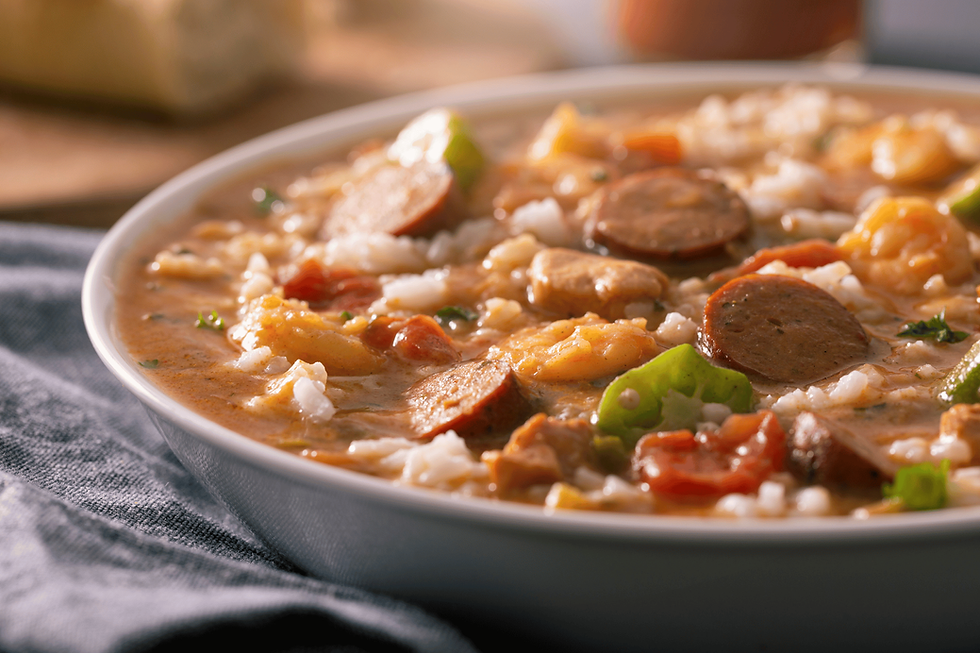From Screen to Table: The Foods That Inspired Disney Movies
- Madison
- Nov 7
- 3 min read
There’s something undeniably magical about Disney food scenes. You know the ones: the steaming bowls, the perfectly plated pastries, the dishes that make your stomach rumble while your heart sings.
As a self-proclaimed Disney movie meal enthusiast, I can’t watch these films without craving every morsel dancing across the screen. But did you know most of these animated treats are inspired by real-world dishes? From Chinese breakfast porridges to French pastries, Disney food is more than eye candy—it’s a tasty passport into the cultures that birthed them.

Beauty and the Beast: Cheese Soufflé
Who could forget the sky-high cheese soufflé in Beauty and the Beast’s “Be Our Guest”? This isn’t just any puffed-up cheese treat—it’s a nod to 18th-century French culinary sophistication. The first recorded soufflé recipe pops up in Vincent La Chapelle’s 1742 Le Cuisinier Moderne, a guide for aristocratic feasts. In the film, the castle staff whip up the dish for Belle, the potential future lady of the estate—so naturally, it had to be spectacular. For anyone who’s ever tried making a perfect soufflé, you know it’s no easy feat. Seeing one rise, shine, and “dance” on screen? Pure cinematic—and culinary—wizardry.
Mulan: Congee
On her first day of military training, Mulan gets a comforting bowl of breakfast porridge topped with sunny-side-up eggs in Mulan. That porridge? Congee, a classic rice dish enjoyed across Asia for centuries. In China, it’s been a staple since the Han dynasty (yes, really—over 2,000 years ago). Hearty, simple, and easy to make in big batches, congee fuels warriors like Mulan. Sure, the bacon and smiley-face eggs are a modern twist, but the essence of this humble dish connects the animated story to centuries of Chinese culinary tradition.

Snow White and the Seven Dwarves: Gooseberry Pie
While the Brothers Grimm’s original story didn’t include gooseberries, Disney’s 1937 classic did, turning them into a plot-driving pie. Gooseberries, or stachelbeere in German, were a labor-intensive fruit, often associated with monasteries—an apt metaphor for Snow White’s solitary life hiding with the dwarves. Baking this green tart wasn’t just a sweet moment on screen; it reflected patience, care, and, unintentionally, her loneliness before the evil queen arrives.

Ratatouille: Ratatouille
Pixar’s Ratatouille makes this Provencal vegetable dish look almost too good to eat. Inspired by chef Thomas Keller’s “confit byaldi,” the movie’s ratatouille isn’t the rustic stew you’d expect; it’s layered, fanned, and glistening—just like a Michelin-star creation. With its roots in peasant cooking and a history of Mediterranean produce, ratatouille celebrates simplicity, freshness, and love in the kitchen—themes at the heart of the film.

The Princess and the Frog: Gumbo
Tiana’s gumbo in The Princess and the Frog is more than a stew; it’s a cultural tapestry. A mix of French roux, African okra, Caribbean seafood, and Native American influences, gumbo mirrors New Orleans itself: diverse, soulful, and communal. Whether meat-heavy, pescatarian, or veggie, this dish represents sharing, family, and the magic of Louisiana—all of which Tiana cherishes.

Robin Hood: Blackberry Pie
In the archery tournament scene of Disney’s Robin Hood, blackberry pies fly off the shelves. Historically, blackberries—or “bremelberies”—were abundant in Medieval England, though pies with buttery crusts came later. The fruit ties Robin Hood to the land and its traditions, showing that even outlaw adventures can have a side of sweet history.

Encanto: Arepas con Queso
Disney’s Encanto features a family living in the Colombian mountains, and their breakfasts are as colorful as their magic. Enter: arepas con queso. This simple, warm corn-and-cheese dish is a staple in Colombian households, particularly in the Andes. With over 900 arepas eaten per household annually, it’s no wonder the film celebrates this comforting, pride-filled food.
Tangled: Hazelnut Soup
Rapunzel’s favorite in Tangled isn’t just cute—it nods to German culinary tradition. Hazelnuts have long been symbolic of patience, life, and mystical experiences. As soup, they reflect Rapunzel’s own story: confined, magical, and full of hidden strength. The dish may not appear in the original Grimm tale, but its symbolism runs deep, blending history and whimsy in a single spoonful.

.png)








Comments